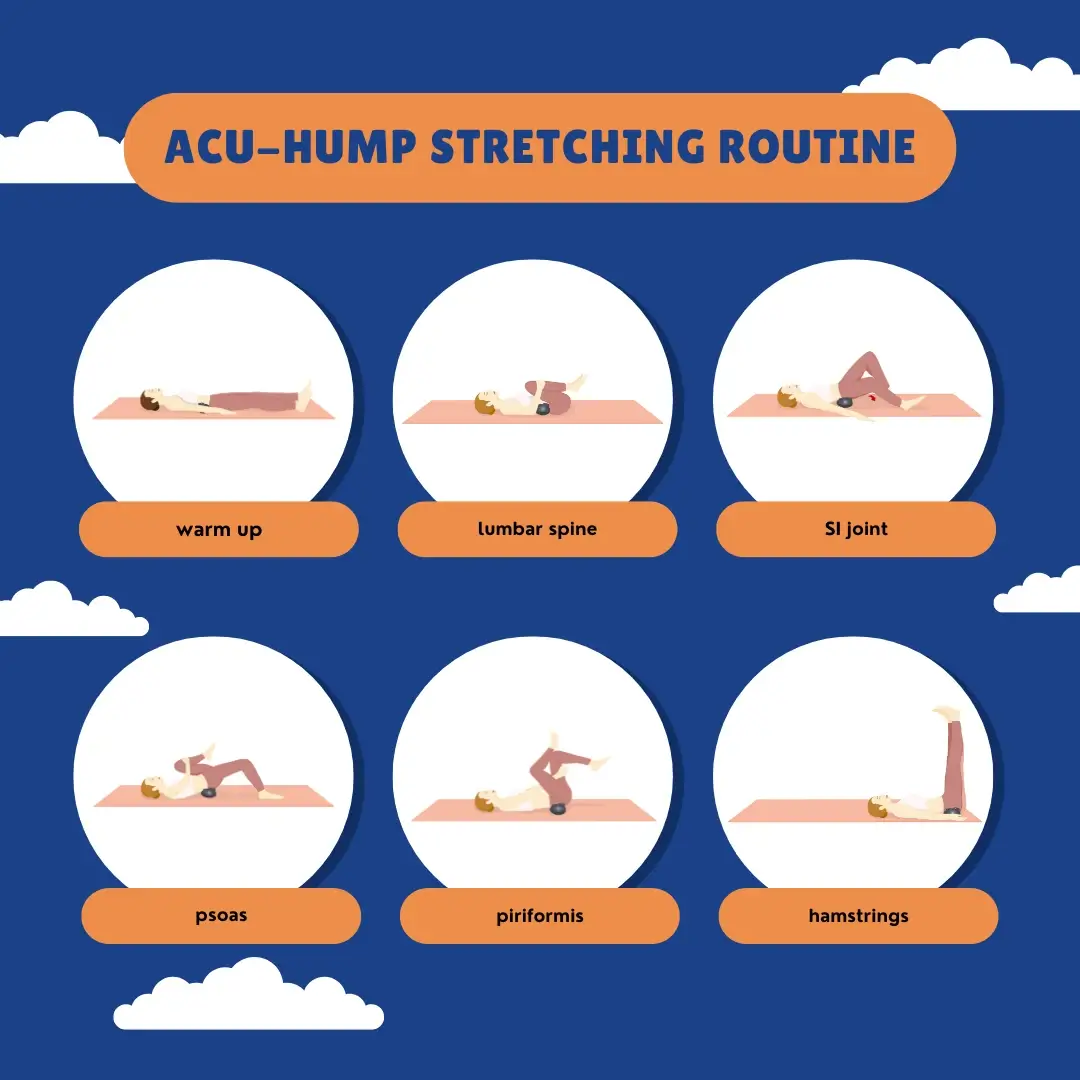Are you experiencing discomfort or pain in your buttocks? Buttock muscle/nerve pain can limit mobility and hinder daily activities. It is essential to address and relieve this pain to restore functionality and improve quality of life.
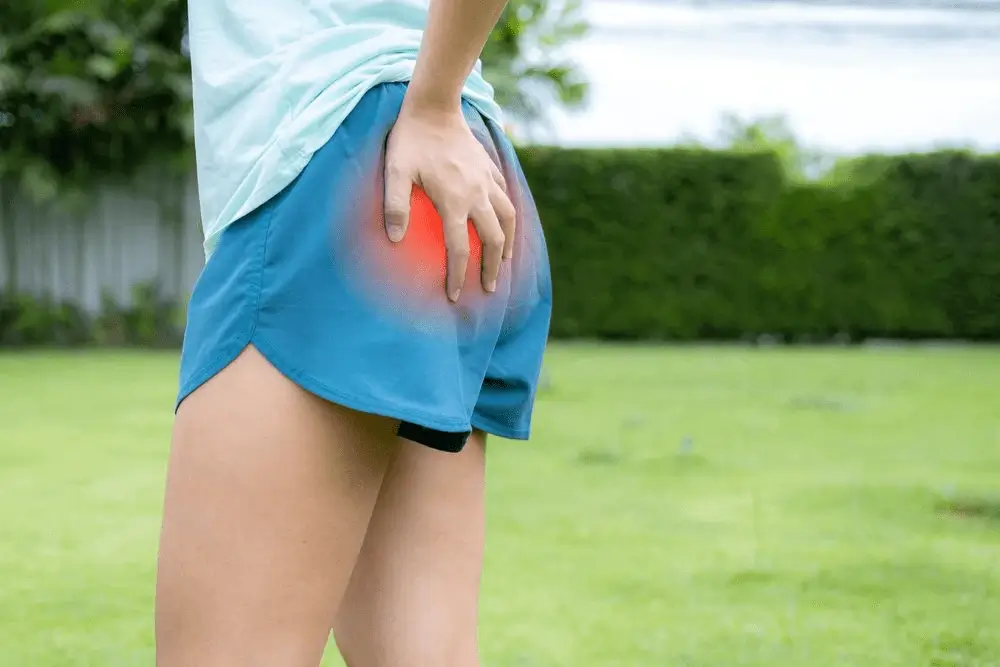
Causes of Buttock Pain
Pain in the buttocks may be muscle pain, nerve pain, or joint pain.
Buttock muscle pain can have various causes. Muscle strain or injury from overexertion or trauma can lead to localized discomfort. Prolonged sitting or living a sedentary lifestyle can result in tight and weakened buttock muscles. Overuse or repetitive movements can also strain the muscles.
Additionally, nerve pain in buttock, like sciatica or piriformis syndrome, where the sciatic nerve is compressed or irritated, can cause deep buttock pain.
Other underlying medical conditions, such as sacroiliac joint dysfunction or hip joint problems, may contribute to the discomfort as well.
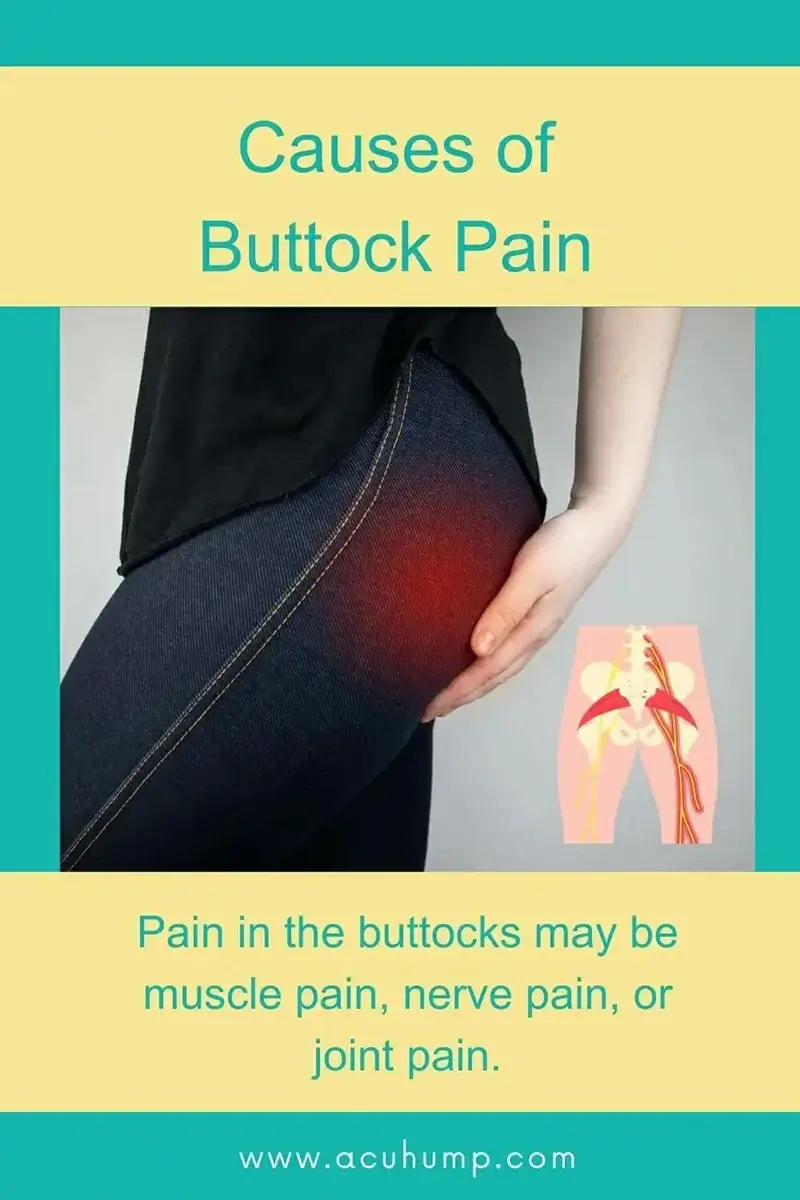
Self-Care Measures for Relieving Buttock Pain
Rest and Activity Modification
Giving the affected muscles sufficient rest is essential for the healing process. Avoid activities that exacerbate the pain and modify movements that may strain the buttock muscles further. This allows the muscles to recover and reduces the risk of worsening the condition.

Ice or Heat Therapy
Applying ice packs or cold compresses to the affected area can help reduce inflammation, swelling, and pain by numbing the area. Heat therapy, such as using a warm towel or taking a warm bath, promotes blood circulation, relaxation, and eases muscle tension.
Stretching Exercises
Incorporating stretching exercises that specifically target the buttock muscles can help alleviate pain and improve flexibility. Moves like the piriformis stretch and figure-four stretch can effectively stretch and relax the muscles.
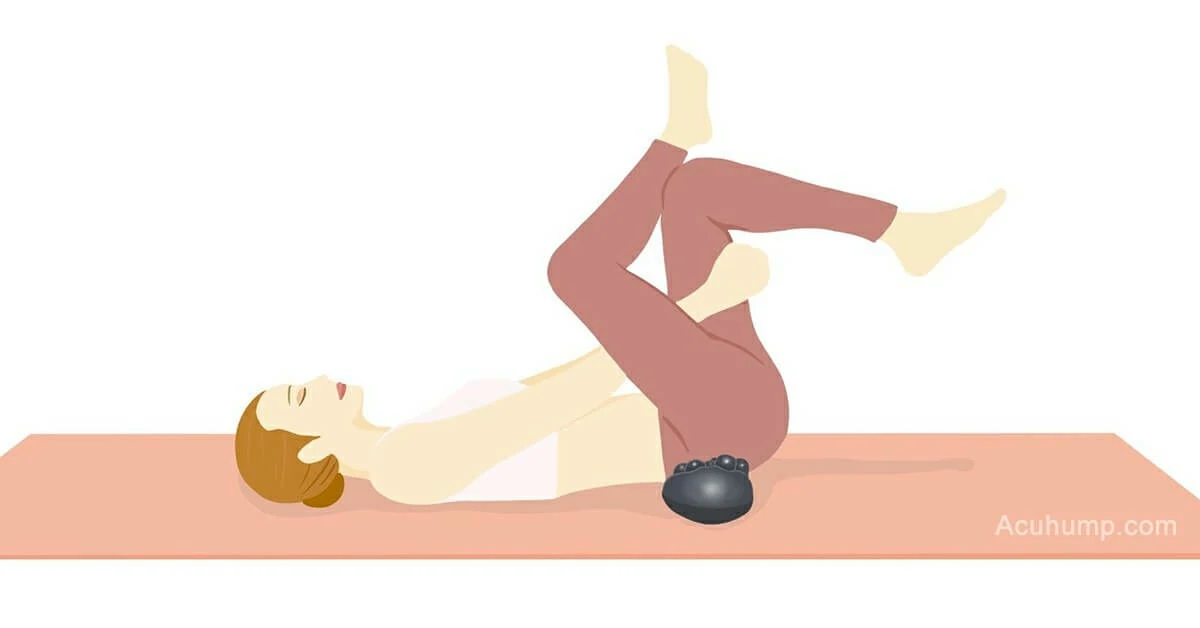
Using tools like the Acu-hump can enhance the effectiveness of the stretches by providing targeted pressure to release tension and elongate the muscles.
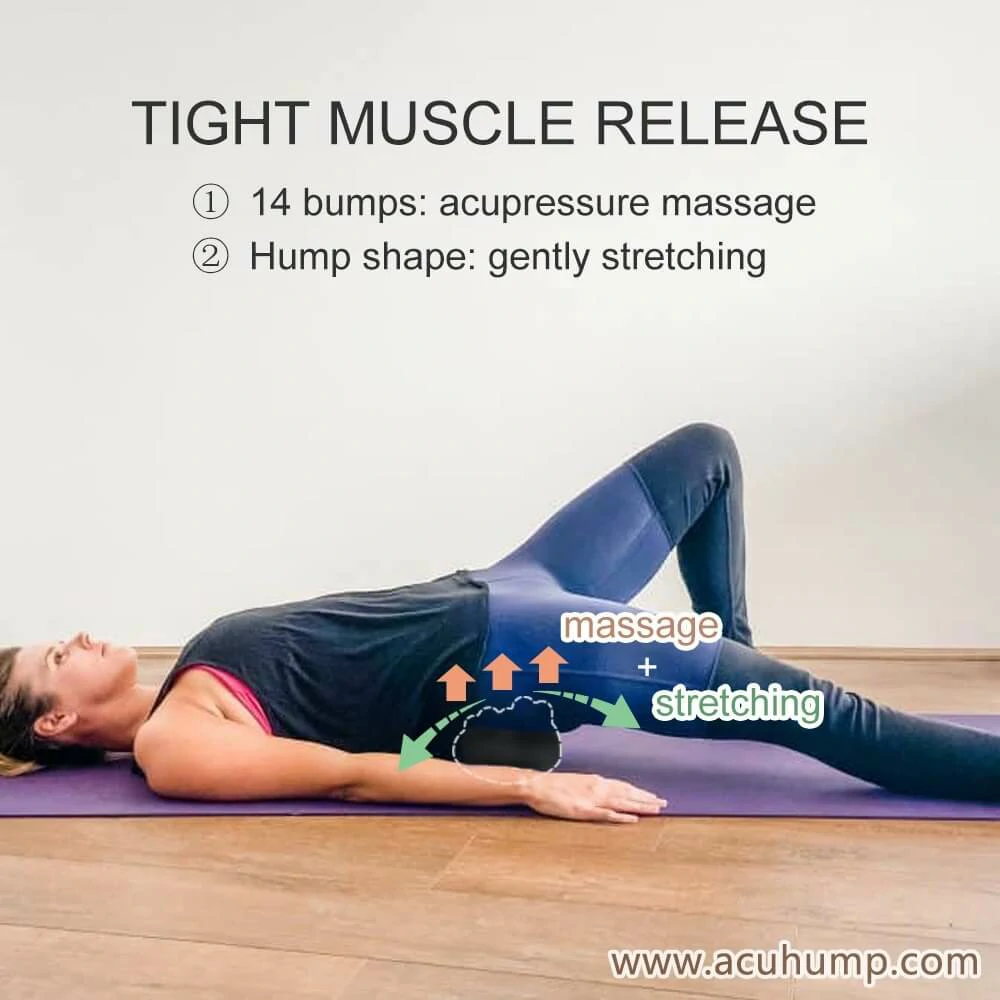
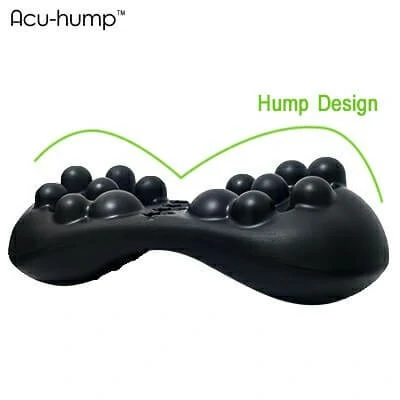
Acu-hump: 30-day return policy.
You have no risk.
Strengthening Exercises
Strengthening the supporting muscles, such as the glutes and core, can provide stability and alleviate strain on the buttock muscles. Exercises like squats, lunges, and bridges can help build strength and improve muscle balance, reducing the load on the buttock muscles.
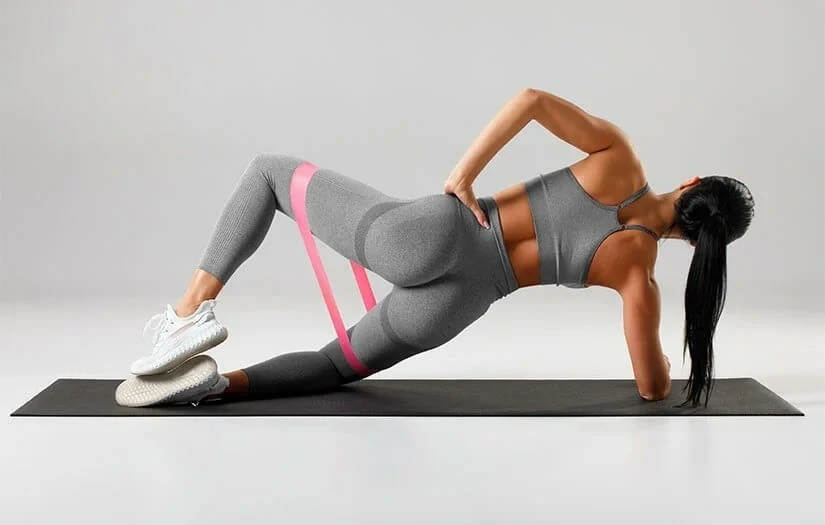
Proper Posture and Ergonomics
Maintaining good posture and practicing ergonomic principles is important in preventing and relieving buttock muscle pain. When sitting, ensure proper lumbar support and use an ergonomic chair if possible. Avoid sitting for prolonged periods and take frequent breaks to stretch and move around. Maintaining proper posture during everyday activities, such as standing, walking, and lifting, can also reduce stress on the buttock muscles and promote better alignment.
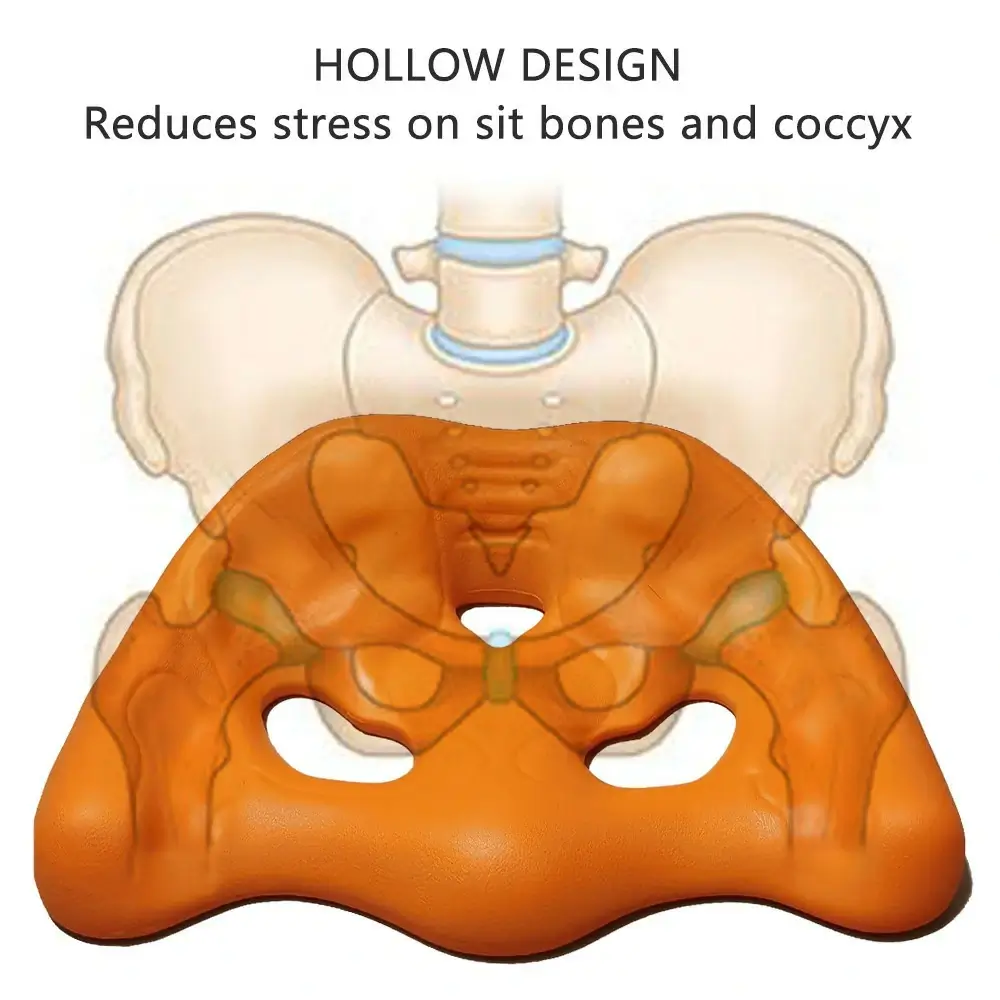
By incorporating these self-care measures into your routine, you can effectively relieve buttock muscle pain, promote healing, and prevent further discomfort. It is important to listen to your body, start gently, and gradually increase intensity or duration as tolerated. If symptoms persist or worsen, it is advisable to seek medical advice for proper diagnosis and treatment.
Professional Interventions for Buttock Muscle Pain
In cases where self-care measures are insufficient, professional interventions can provide additional relief. Physical therapy and rehabilitation programs specifically designed to address buttock muscle pain can incorporate exercises, manual therapies, and modalities to reduce pain and improve muscle function.
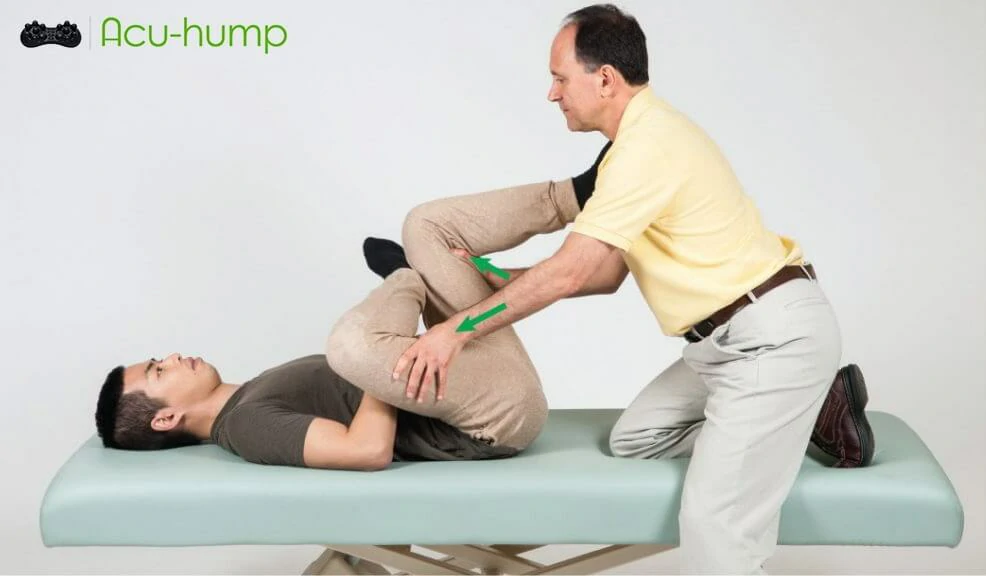
Massage therapy, including myofascial release techniques, can target the affected muscles, releasing tension and promoting relaxation. Chiropractic care, including spinal adjustments, may help align the spine and alleviate pain. Acupuncture or acupressure can stimulate specific points to reduce muscle tension and pain.
In severe cases, healthcare professionals may prescribemedications, such as muscle relaxants or nonsteroidal anti-inflammatory drugs (NSAIDs), or administer local injections, such as corticosteroids, to alleviate pain and reduce inflammation.
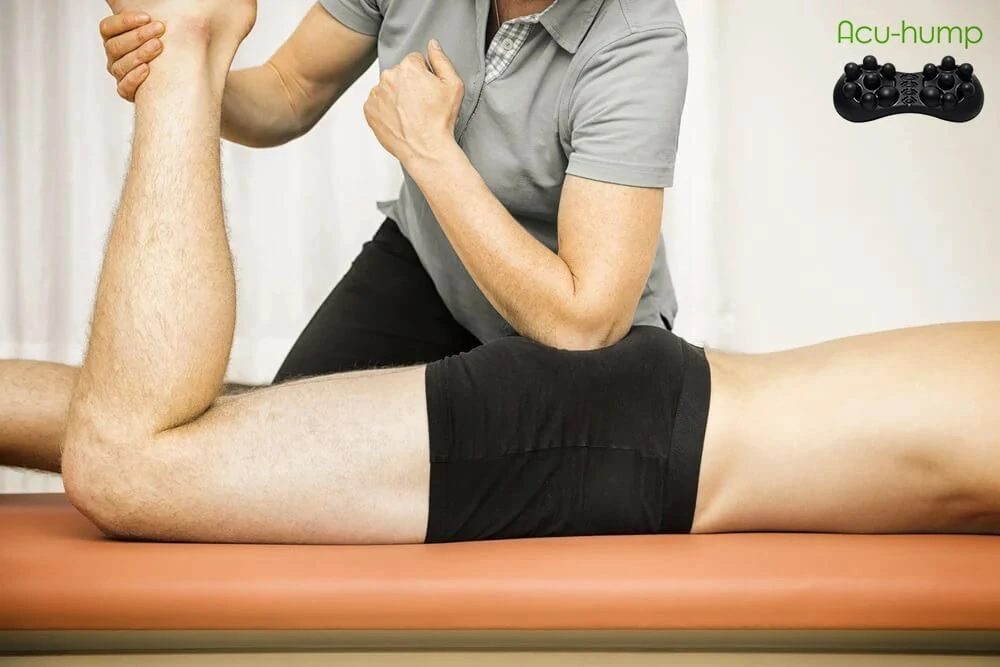
The Acu-hump is a acupressure tool that combines massage and stretching techniques, providing targeted relief for my buttock pain. Its innovative design allows for precise pressure application along the affected areas, promoting deep muscle relaxation and enhancing the effectiveness of my stretching exercises.
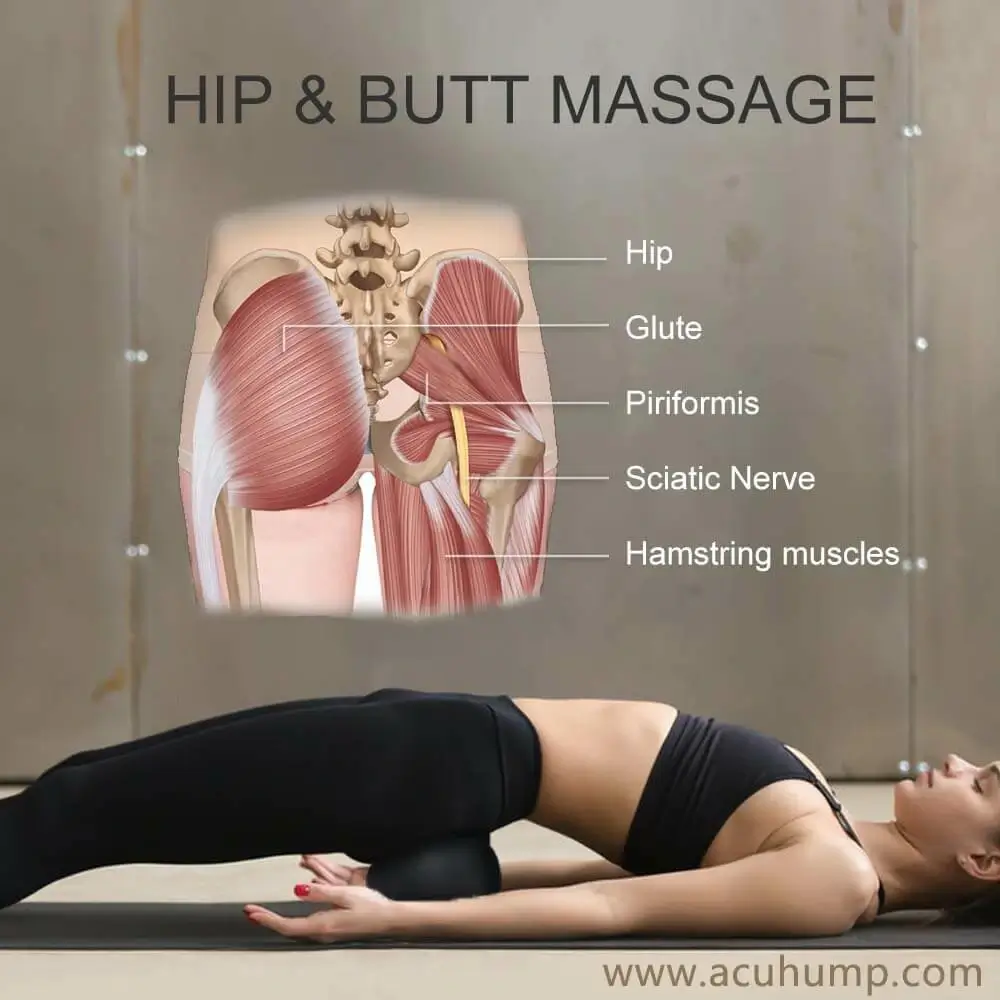
Lifestyle Modifications for Prevention
Taking steps to prevent buttock muscle pain can minimize the risk of experiencing discomfort in the future. Regular exercise and physical activity that target the buttock muscles, such as walking, jogging, or specific glute-strengthening exercises, can improve muscle strength and flexibility. Prior to engaging in physical activities, proper warm-up exercises and stretching routines should be incorporated to prepare the muscles for movement and reduce the risk of strain.
Maintaining a healthy weight through a balanced diet and regular exercise can also alleviate stress on the muscles. Moreover, avoiding prolonged periods of sitting or standing in the same position, and incorporating frequent breaks and changes in posture, can prevent muscle tightness and promote circulation. Additionally, practicing postural awareness and utilizing proper body mechanics, such as lifting with the legs instead of the back, can minimize strain on the muscles and reduce the likelihood of pain.
Seeking Medical Attention for Persistent Pain
If buttock muscle pain persists despite self-care measures and lifestyle modifications, it is essential to seek medical attention. Consulting with a healthcare professional or primary care physician can provide a comprehensive assessment, accurate diagnosis, and appropriate treatment plan. Persistent pain may require further evaluation by a specialist, such as a physical therapist, orthopedic specialist, or pain management physician, who can provide specialized interventions and guidance to address the underlying cause of the buttock muscle pain.
In conclusion, relieving buttock muscle pain involves a combination of self-care measures, professional interventions, and lifestyle modifications. Rest and modification of activities, along with ice or heat therapy, stretching exercises, and strengthening routines, can provide relief and improve muscle function. Engaging in physical therapy, massage therapy, or seeking chiropractic and acupuncture care can offer additional options for pain management.
Adopting a proactive approach to prevention through regular exercise, maintaining a healthy weight, practicing proper posture, and incorporating body mechanics can help reduce the risk of buttock muscle pain. Persistent pain warrants medical attention and consulting with healthcare professionals can provide proper diagnosis and personalized treatment plans. By addressing buttock muscle pain effectively, individuals can regain comfort and functionality, enhancing their overall well-being.

Let’s Get Rid of Piriformis Pain
Save It to Your Phone and View It Anytime
Click to download: Daily Stretching Routine PDF
